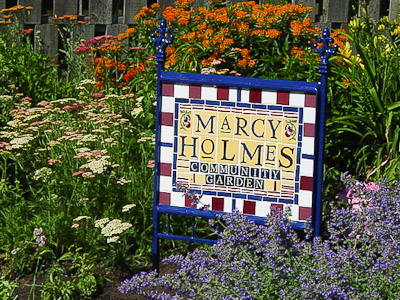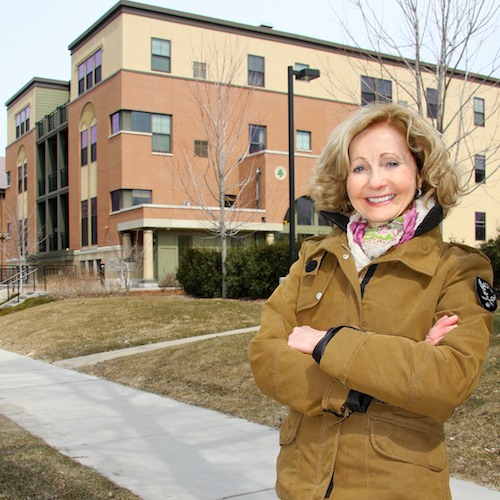Making the Third Ward a Leader in Ecofriendly Development
Green Buildings

As redevelopment continues throughout downtown, Southeast and Northeast communities, we have an opportunity to solve pollution problems, to reduce the use of landfills, and to improve our environment.
One of the most obvious ways to see improvement is by adopting Leadership in Energy and Environmental Design (LEED) standards for publicly funded projects, and by encouraging all developments in the City to reach toward Gold LEED certification.
I have worked to promote sustainable green practices in construction, in the workplace, and in our neighborhoods in a number of ways.
- The Hawthorne EcoVillage is an example of how green building and green home rehab can transform a community. I worked with the Hawthorne Area Community Council, the Tree Trust, the LHB Corporation, and the Home Depot Foundation to redevelop a four-block cluster near Lyndale and Lowry Avenue North. This $3 million project provided more than just new housing to an area hit hard by foreclosure. It’s a model for green development, urban renewal and community building. It also gave us an opportunity to implement the Mississippi Watershed Management Organization storm water management plan.
- Before and during construction of the new 35W bridge, I worked with the Minneapolis Public Works Department, MnDOT staff, project manager Jon Chicaglo, the Marcy-Holmes neighborhood, and other agencies to ensure that construction of the bridge had minimal impact on the river and the surrounding ecology. Linda Figg, the President of Figg Construction, worked with us to achieve the results that we are able to see today.
- The renovation of the historic Pillsbury A-Mill is a $130 million project to preserve an endangered building on the National Register of Historic Places. It will provide 225 units of affordable housing for artists and includes studio space and performance space. The area surrounding the building, including a sunken garden, will be open to the public. The City of Minneapolis received a $295,000 grant to evaluate the possibility of creating a museum/interpretive center, which would allow visitors to view the historic turbines, and raceway tunnels that generated power for the mill.
My work on eco-friendly development preceded my tenure on the City Council. As Co-Chair of the Central Library Building Committee, I understood that a safe and healthy environment was critical for workers at the site and employees and visitors to the library. The library construction project had a 100% percent safety record, which resulted in the insurance company returning $750,000 to the City of Minneapolis. The building includes three green roofs, which reduce water run off into the Mississippi River and reuses the rainwater for outdoor trees and other uses in the building.
Green Homes

Going "green" is more than a nice idea; it's an imperative in our increasingly resource-challenged, environmentally stressed planet. It's absolutely one area where the familiar slogan "Think Globally, Act Locally" rings true.
That's why I'm proud that Minneapolis is one of the leaders in the U.S. in supporting environmentally friendly initiatives like the "Green Homes North" program that provides home buyers with newly constructed homes on City-owned vacant lots in North Minneapolis. Green Homes North properties incorporate green design standards, energy efficiency and sustainability standards. They promote job creation and workforce development and the use of local green products in their construction. In short, they demonstrate how to make our communities economically and environmentally sustainable.
For 2013, the Green Homes North program will assist developers with development gap financing for new construction. To date, the City has received proposals from six developers (four non-profits and two private developers) to construct 18 new homes in North Minneapolis. Included are proposals to build on four lots damaged by the 2011 tornado. Over the next five years, the program looks to encourage the construction of 100 new homes in North Minneapolis using approximately $1 mlliion in grants and $2 million in loans.
Recycled Materials
I am a strong advocate of the inclusion of green components and green building techniques. Some North Loop warehouse redevelopments for housing and office space have reused existing materials to stunning effect.
We’re also seeing the growth of small businesses refurbishing and selling vintage furniture to a young adult market that finds mid-century modern the style of choice.
Bird-Friendly Architecture
A green building concern that’s becoming a national movement is described in the newspaper article on bird-friendly architecture. The vast expanses of glass in modern buildings have resulted in an estimated 100 million bird deaths a year. There are building materials and retrofit strategies that can greatly reduce accidental collisions with windows.
Moving Forward
With your support, I will continue to be at the forefront of leadership in eco-friendly development. By listening to community voices, thoughtful planning, and implementing green technologies, I will ensure that Minneapolis continues to stimulate ever-wider adoption of environmentally green practices in housing, commercial development, business practices and daily living.







